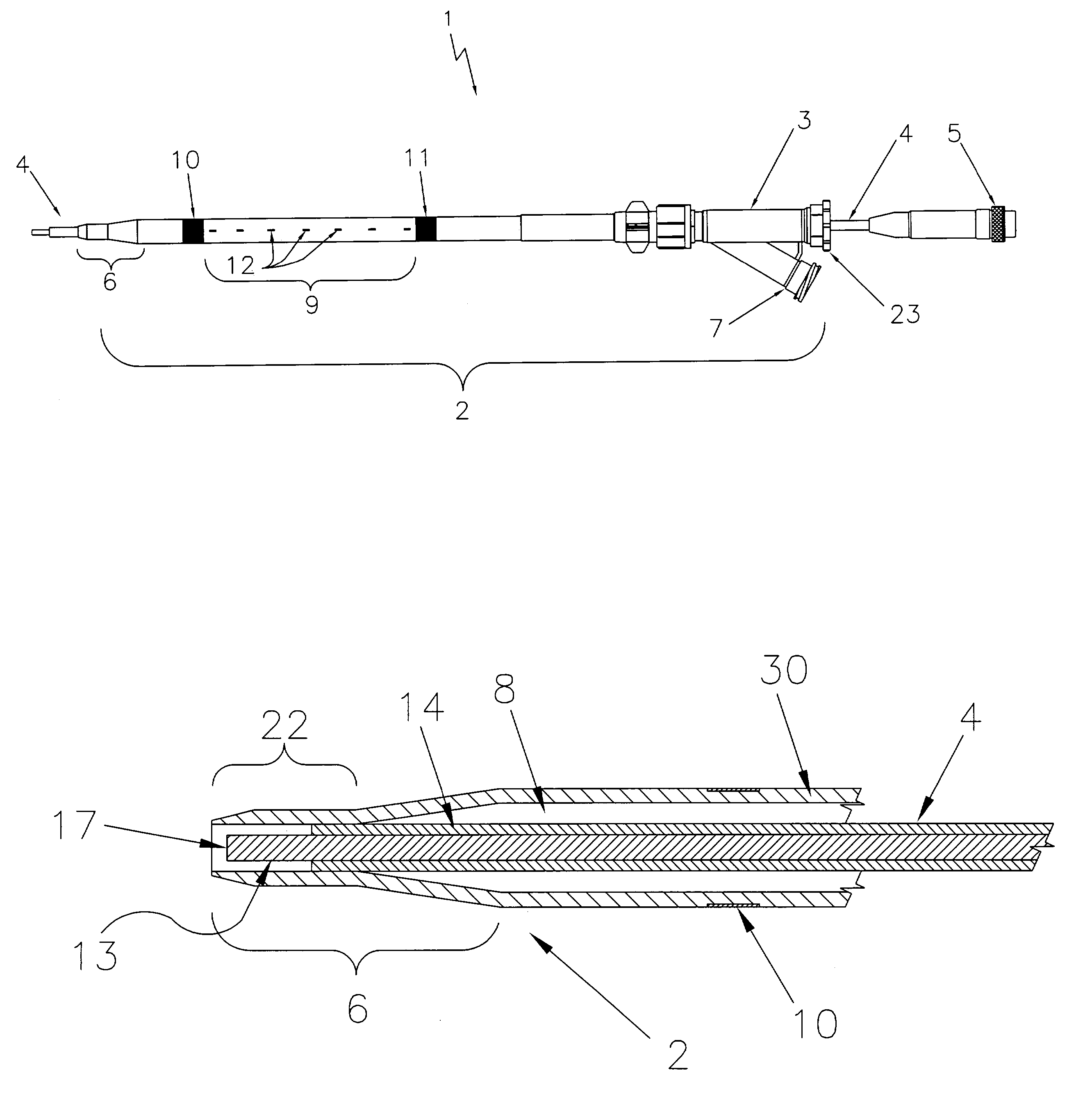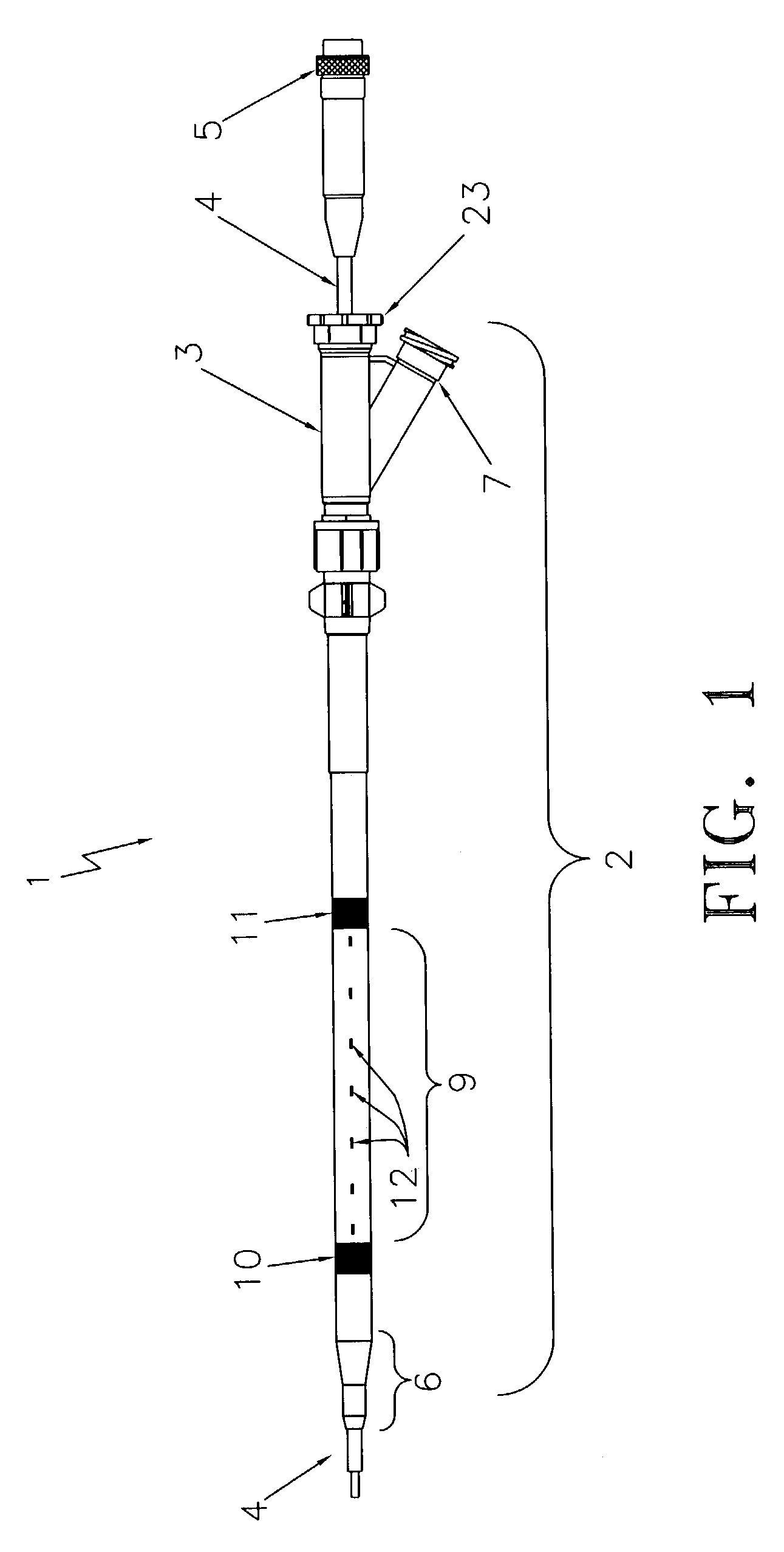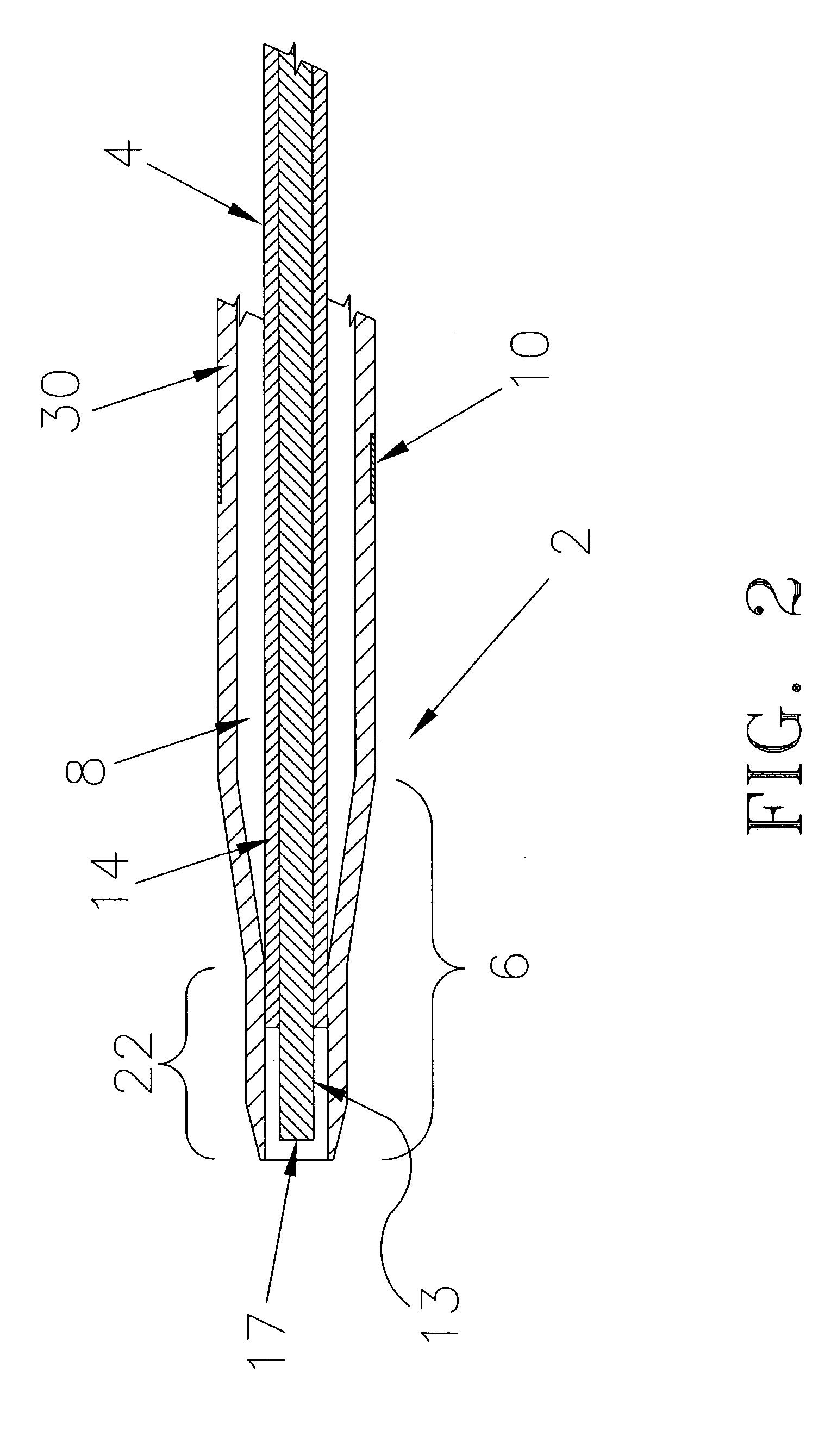Vascular treatment device and method
a treatment device and vascular technology, applied in the field of vascular treatment devices and methods, can solve the problems of affecting the patient's recovery, and unable to prevent the backflow of blood into the superficial veins, so as to reduce the trauma, pain and post-operative bruising of the patient, and achieve substantial time and cost savings
- Summary
- Abstract
- Description
- Claims
- Application Information
AI Technical Summary
Benefits of technology
Problems solved by technology
Method used
Image
Examples
Embodiment Construction
[0031]An endovascular laser treatment device 1 according to the present invention is illustrated in FIG. 1. It is to be noted that the device 1 is illustrated with only a laser optical fiber for purposes of clarity only. Other types of energy delivery source such as RF electrodes can also be used with the present invention.
[0032]The laser treatment device 1 includes an infusion catheter assembly 2 having a Y-connector 3, and an optical fiber 4 having a SMA connector 5. The catheter 2 is a tubular structure used to facilitate the passage of the optical fiber 4 within the cardiovascular system of a patient. Referring to FIGS. 1–3, the catheter 2 has a catheter tip section 6 with a through-lumen 8 for insertion and passage of the optical fiber 4. The catheter tip section 6 is defined by an occluding zone 22 shown in FIGS. 2–3. When the optical fiber 4 is inserted and advanced through the catheter lumen 8 into the occluding zone 22, the optical fiber 4 in contact with an inner wall of t...
PUM
 Login to View More
Login to View More Abstract
Description
Claims
Application Information
 Login to View More
Login to View More - R&D
- Intellectual Property
- Life Sciences
- Materials
- Tech Scout
- Unparalleled Data Quality
- Higher Quality Content
- 60% Fewer Hallucinations
Browse by: Latest US Patents, China's latest patents, Technical Efficacy Thesaurus, Application Domain, Technology Topic, Popular Technical Reports.
© 2025 PatSnap. All rights reserved.Legal|Privacy policy|Modern Slavery Act Transparency Statement|Sitemap|About US| Contact US: help@patsnap.com



